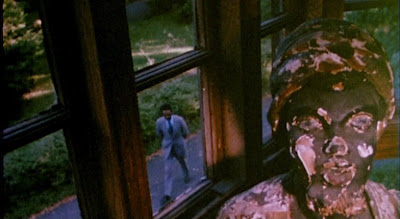
I often say Jacques Cousteau when I mean to say Jean Cocteau. Making matters more confusing is the missing link between them — French marine biologist Jean Painleve — whose underwater cinema predates Cousteau's by decades and, whose body of work, like Cocteau's, is dedicated to exploring life on "the other side." Except that Cocteau entered mysterious realms in his films through mirrors, telephones and radios; Painleve, through the sea and micro-photography.
Painleve pioneered, not only wildlife films, but popular wildlife films. A good example is his entertaining movie about crustaceans, photographed in studio-bright black-and-white, one of 23 included in the recently released, three-disc Criterion set "Science is Fiction." We watch the intrigues of sea creatures who disguise themselves in algae and sponges, as the narrator enthusiastically mixes fact with poetic observation — comparing the crustaceans to ballerinas, "Japanese warriors" and "praying buddhas."
Anthropomorphism dominates, but Painleve also focuses on traits that set his subjects apart. Among sea horses, for example, it is the female who produces the eggs and the male who gives birth. Painleve spent sleepless nights behind the camera, even installing an electrical shock mechanism on his hat should he nod off while waiting for one pregnant papa to pop. The footage of baby sea horses bursting out of the convulsing male's pouch was worth the wait: "The Sea Horse" (1933) was Painleve's most popular movie; he even spun off a jewelry line.
The care Painleve took in choosing music for his films also was ahead of its time. He had Darius Milhaud score "The Sea Horse"; Painleve wrote his own music for "Sea Urchins" (1954), a symphony of banging pots and pans in tribute, he said, to Edgar Varese but with a mambo bar thrown in "so as not to be taken too seriously"; and "The Vampire" (1945) is set to a couple of Duke Ellington songs.




"The Vampire" is classic Painleve in the way it fixes on an odd attribute of an exotic animal — the vampire bat's affinity for the blood of other animals — and draws out a comparison to humans. “When I was finishing the film," Painleve said, "I noticed how the vampire bat extends its wing before going to sleep. I thought it looked like the Nazi heil-Hitler salute.” Painleve also taps fictional cinema here, coupling footage of the vampire bat with scenes from "Nosferatu."
It was that penchant for playful presentation, and fetishism of the bizarre, that sent some of Painleve's fellow scientists storming out of his screenings, denying the validity of his work. But Painleve, like his subjects, was a strange breed. He was a scientist crossed with an artist.
— Becky

















